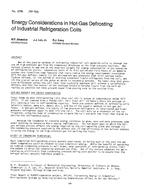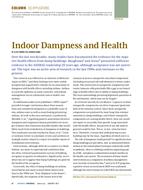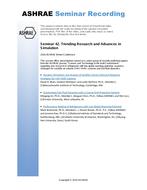The performance of open-cycle desiccant cooling systems depends on several factors, some of which can change beyond manufacturers’ specifications. For example, the desiccant sorption process may degrade with time on exposure to airborne contaminants and thermal cycling. Desiccant degradation can reduce the performance of a dehumidifier and thus the performance of desiccant cooling systems. Using computer simulations and recent experimental data on silica gel, the impact of degradation was evaluated. Hypothetical degradations of desiccants with Type 1 moderate isotherms were also simulated. Depending on the degree and type of desiccant degradation, the decrease in thermal coefficient of performance (COP) and cooling capacity of the system was 10% to 35%. The 35% loss in system performance occurs when desiccant degradation is considered worst case. The simulations showed that the COP and, to a lesser degree, the cooling capacity of these degraded systems could be improved by increasing the rotational speed of the dehumidifier. It is shown that easy engineering solutions might be available for some types of degradations.
KEYWORDS: desiccants, cooling, performance, coefficient of performance, dehumidifiers, adsorption dehumidifiers, deteriorating, rotating, speed, deteriorating.
Citation: Symposium, ASHRAE Transactions, vol.97, Pt. 1, New York 1991
Product Details
- Published:
- 1991
- Number of Pages:
- 7
- File Size:
- 1 file , 940 KB
- Product Code(s):
- D-18579


